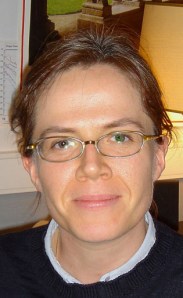
Martin Reiris is Junior Scientist at the Max Planck Institute for Gravitational Physics (Golm-Germany) since 2009. He received the PHD in pure math in 2005 at SUNYSB, and held a Moore Instructor in Math at MIT from 2006 to 2009. His interests are mainly in geometry and the mathematical structure of general relativity
In the extraordinary manuscript The Foundation of the Generalised Theory of Relativity, printed in 1916 in Annalen der Physics, Einstein begins addressing what he calls an epistemological defect of classical mechanics, (as well as of special relativity), whose dignity he attributes to E Mach. He imagined two bodies, A and B, made of the same fluid material and sufficiently separated from each other that none of the properties of one could be attributed to the existence of the other. Observers at rest in one body, he continues, see the other body rotating at a constant angular velocity, yet these same observers measure a perfect round surface in one case and an ellipsoid of rotation in the other case. It is then asked: “Why is this difference between the two bodies?”. Continue reading



You must be logged in to post a comment.